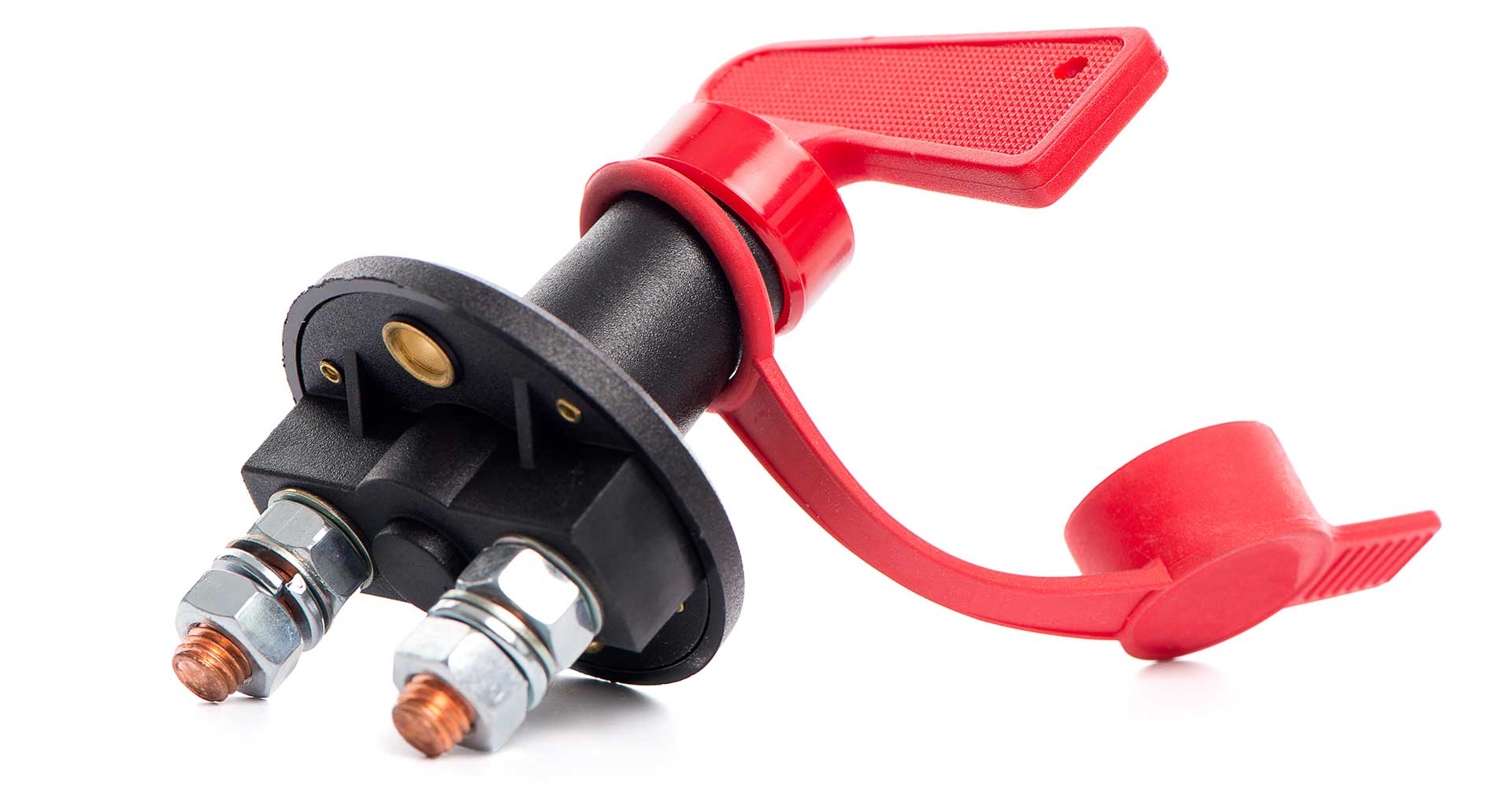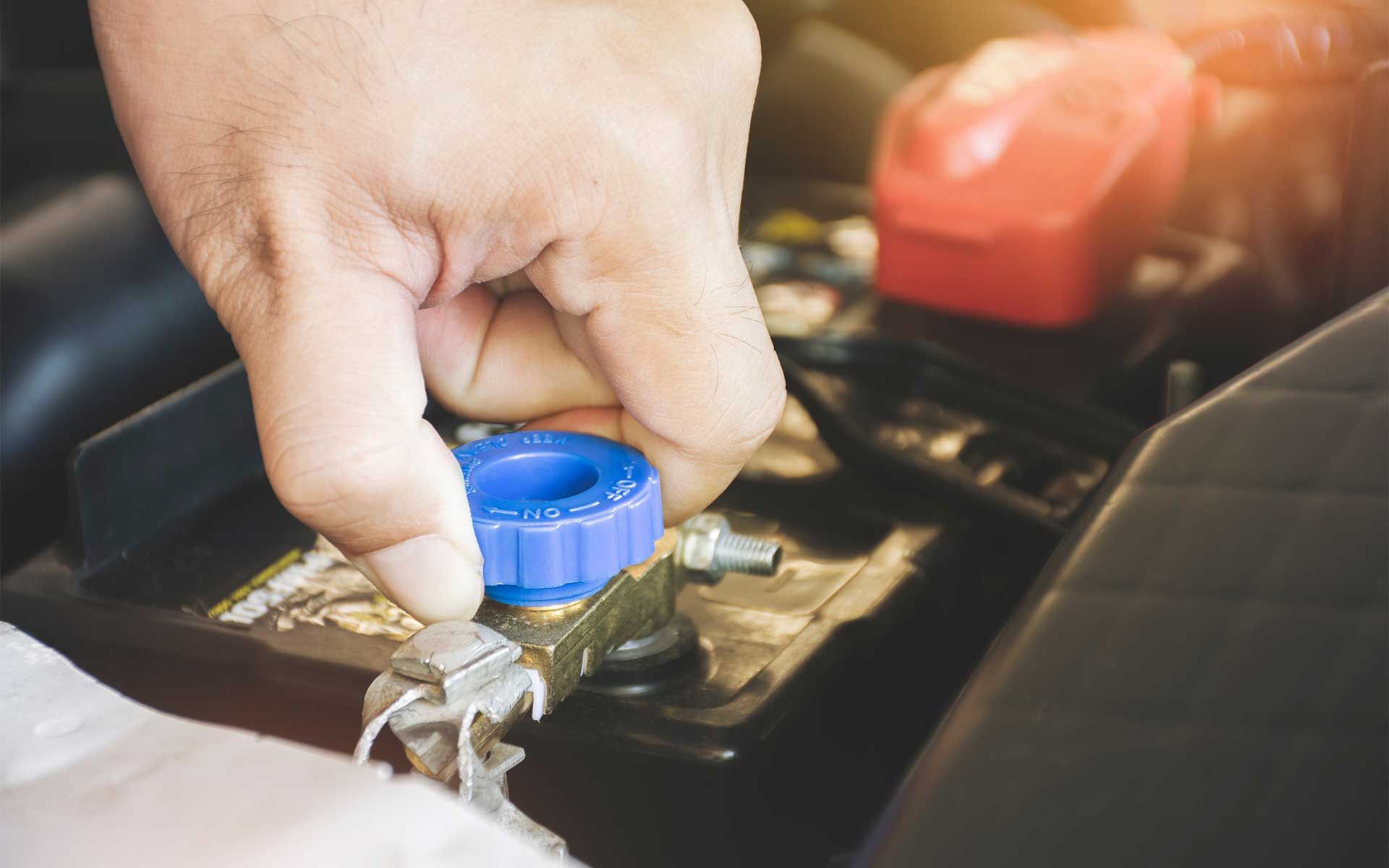The battery disconnect switch, also known as a master or kill switch, plays a critical role in automotive applications by ensuring operational safety, protecting the battery, preventing theft, facilitating maintenance and servicing, and aiding electrical system troubleshooting. Their role in the automotive industry is invaluable, as these small yet mighty devices enhance operational efficiency, reliability, and overall vehicle security.
Today’s post discusses the most common applications for an automotive battery disconnect switch and other valuable information, including selection and installation advice and our top battery disconnect switch brand recommendations.
- Most Common Applications of Battery Disconnect Switches in the Automotive Industry
- How To Install A Battery Disconnect Switch?
- How do I Choose a Battery Disconnect Switch?
- Commercial Vehicle Battery Disconnect Switches
Most Common Cases of Battery Disconnect Switch Installation in the Automotive Industry
A master battery disconnect switch is responsible for several important commercial vehicle and equipment functions. A vehicular machine or car battery disconnect switch can cut off electrical power when necessary, help protect against electrical fires and theft when equipment is not in use, provide a reliable power shutdown during maintenance, and protect batteries from excessive drain.
From protecting a vehicle’s battery during prolonged storage to protecting technicians while servicing electrical systems, battery disconnect switches are critical to the safety and function of commercial or industrial vehicular equipment in numerous areas of industry.
- Fleet vehicles: Battery disconnect switches are commonly used in commercial fleet vehicles such as trucks, delivery vans, and buses. They allow for the safe disconnection of the battery when these automotive machines are not in use, preventing battery drain and preserving battery life across the fleet.
- Construction equipment: Battery disconnect switches are vital in various types of construction equipment, including excavators, loaders, bulldozers, and cranes. They enable operators to disconnect the battery during equipment downtime, preventing unauthorized use, reducing battery drain, and improving overall equipment security.
- Agricultural machinery: Battery disconnect switches are widely employed in agricultural vehicles and equipment like tractors, harvesters, and sprayers. They serve to prevent battery drain during periods of inactivity, maintenance, or storage, ensuring that the equipment is always ready for use.
- Utility vehicles: Battery disconnect switches are commonly found in utility vehicles used in landscaping, maintenance, or service operations. These vehicles often have auxiliary electrical systems and equipment, and disconnect switches allow operators to isolate the battery when not in use, preventing power drain and maintaining battery longevity.
- Emergency vehicles: A car battery disconnect switch is critical in emergency vehicles like fire trucks, ambulances, and police cars. They provide a fast and efficient way to disconnect the battery during emergency situations, ensuring the safety of responders and preventing accidental activation of vehicle systems.
- Material handling equipment: Battery disconnect switches are essential in forklifts, pallet jacks, and other types of material handling equipment. They allow operators to disconnect the battery when the equipment is not in use, preserving battery charge, minimizing battery wear, and improving equipment performance and longevity.
- Specialty vehicles: Battery disconnect switches are used in various specialty vehicles, such as mobile clinics, mobile workshops, or recreational vehicles (RVs). These switches help preserve battery charge during storage or downtime, prevent unauthorized use, and ensure reliable operation when needed.
How To Install A Battery Disconnect Switch?


Fortunately, a battery disconnect switch install is not overly complicated. In general, for most applications, it involves making some choices and following a few steps for safe installation. Although the process will vary from vehicle to battery type, a few rules always apply when determining how to install battery disconnect switches, including ensuring all power is off before beginning, carefully following the manufacturer’s installation instructions, and thoroughly testing the switch once installed.
Importance of Installing a Battery Disconnect Switch
Installing a battery disconnect switch is critical to enhancing a vehicle’s operational efficiency, maintenance safety, and overall operational reliability and security. Installing this small device can discourage machinery theft, reduce problems with batteries being drawn down during storage, and protect technicians during emergencies and maintenance.
Where to Install a Battery Disconnect Switch?
When determining how to install a battery disconnect switch, the where is just as important as how. It’s important to pick a suitable location to mount the disconnect switch so it’s easily accessible and firmly secured. Common mounting locations include the battery box, firewall, or a visible and easily reachable area within the vehicle's interior.
How do I Choose a Battery Disconnect Switch?
Choosing a battery disconnect switch suitable for your vehicle and application is critical, as it will need to meet the specific needs and demands of commercial vehicle applications to ensure reliable performance, safety, and compliance with regulations. Following are some key factors to keep in mind during the selection process:
- Ensure that the switch's current rating matches or exceeds the maximum current requirements of the vehicle's electrical system. Commercial vehicles may have higher power demands, so selecting a switch with an appropriate current rating is crucial to ensure reliable operation.
- Determine the right type: manual switch or remote switch. Manual switches are operated manually by flipping a lever or rotating a knob - while a remote battery disconnect switch can be controlled from a distance using a remote key fob or control panel. Consider the convenience and accessibility of the switch type based on the vehicle's usage and operator preferences.
- Confirm that the switch is compatible with the voltage of the vehicle's electrical system. Most commercial vehicles operate on a 12-volt or 24-volt system, so choose a switch that is rated for the appropriate voltage.
- Choose a switch that meets the industry standards for ruggedness and durability as needed. For example, a heavy duty battery disconnect switch is designed to operate in demanding environments and withstand vibrations, temperature variations, and exposure to moisture, chemicals, and other harsh conditions when necessary.
- Consider the mounting options for the switch and ensure compatibility with the vehicle's design and available installation locations.
- Consider any necessary safety features, as some battery disconnect switches have additional features such as integrated locks, tamper-proof designs, and emergency cutoff capabilities.
- Ensure that the battery disconnect switch you choose meets regulatory requirements and industry standards to ensure compliance.
Commercial Vehicle Battery Disconnect Switches
Whether you need a car, forklift, tractor, aviation, or RV battery disconnect switch, it’s just as important to consider the manufacturer’s reputation and the warranty provided with the switch as the features mentioned above. A reputable brand with a reliable warranty can give you confidence in the quality and longevity of the product.
As a leading authorized stocking distributor of high-quality, reliable electronic components applicable to various industries, including automotive, Peerless is committed to carrying products built to perform and last, including the automotive battery disconnect switches offered by both KISSLING and Cole Hersee.
KISSLING Battery Disconnect Switches
KISSLING has been manufacturing high-reliability electromechanical and electronic control devices for over 60 years, and its broad switch portfolio includes battery disconnect switches designed for the most demanding requirements. KISSLING’s high-quality battery disconnect switches can be found in military vehicles, emergency and specialty vehicles, commercial trucks, fixed-wing and rotary aircraft, and transit buses.


KISSLING’s extensive experience in switching solutions can meet both standard and exclusive switching requirements. Peerless Electronics is now stocking KISSLING battery disconnect switches and new lightweight relays and contactors for heavy-duty and aviation applications.
Cole Hersee Battery Disconnect Switches
Since 1924, Cole Hersee has been a pioneer and leader in developing heavy-duty electrical products for the vehicle industry and has earned a reputation for quality and value. Cole Hersee collaborated on many basic industry standards and is a preferred supplier of over 2,000 dependable products and accessories for construction, agriculture, military and commercial vehicles - including reliable battery disconnect switches.


Cole Hersee’s high-quality automotive battery disconnect switches and other products are available as standard or custom-designed to meet application and customer needs.
When shopping KISSLING or Cole Hersee automotive battery disconnect switch products, you get industry-leading and experienced-backed components and the Peerless VA Experience, including custom-tailored technical support for all purchases!




